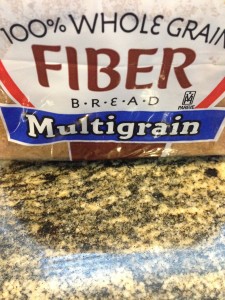January is National Fiber Focus Month
 Fiber is a form of carbohydrate, also known as roughage or bulk. It is sugar or starch from plants. There are many great food sources of fiber including fruits, vegetables, whole grains and legumes. Nutritional fiber supplements are another way to incorporate fiber into your diet. An example of a fiber supplement is psyllium, which is made from the seed from a shrub-like herb.
Fiber is a form of carbohydrate, also known as roughage or bulk. It is sugar or starch from plants. There are many great food sources of fiber including fruits, vegetables, whole grains and legumes. Nutritional fiber supplements are another way to incorporate fiber into your diet. An example of a fiber supplement is psyllium, which is made from the seed from a shrub-like herb.
There are two forms of fiber, soluble fiber and insoluble fiber. The type of fiber varies depending on the food, though most foods contain a mix of soluble and insoluble fiber. Insoluble fiber attracts water to the intestine, which increases the bulk and softness of stool. Soluble fiber softens stool and also ferments in the intestine to produce healthy gut bacteria.
National Fiber Focus month emphasizes adding fiber to your diet for health benefits. Fiber has health benefits that include regulating your digestive patterns while avoiding constipation. Other benefits include heart health, lowering cholesterol, regulating weight, regulating blood glucose and maintaining intestinal health.
Fiber works in the small intestine to cause a sense of fullness, trap cholesterol and fats, and slow absorption of sugars. These actions result in weight regulation, lowering cholesterol and improving blood sugar levels.
Fiber works in the large intestine to cause fermentation and creation of healthy gut bacteria. This enhances the immune system to fight infection and chronic disease. Fiber also absorbs water, therefore adding bulk to stool. This regularity minimizes constipation. Fiber can also be useful in diarrheal episodes because of this same action of absorbing water by acting like a sponge.
The National Fiber Council recommends consuming 32 grams of fiber per day for a healthy adult. However, you should also make sure you are consuming an adequate amount of water in conjunction with the fiber. This is because inadequate water intake can result in hardened stool, therefore, 8 to 12 (8-oz) cups of water are recommended each day.
If you have not been consuming enough fiber, then you should begin to do so slowly. When adding fiber to your diet, it is best to follow these steps:
1. Start slowly by adding one fiber-rich food daily for one week, then increase to two until recommended levels are reached.
2. Add high-fiber foods gradually. Too much fiber at once creates discomfort.
3. Eat a variety of fiber-rich foods such as whole grain bread products, oatmeal, fruits, and vegetables.
4. Increase your daily intake of water.
Adding fiber to your diet can create powerful benefits to improve your health.
Now it’s your turn to take action: What will you do this week to increase your fiber intake?


Trackbacks & Pingbacks
[…] *National Fiber Focus Month […]
[…] *National Fiber Focus Month […]
Leave a Reply
Want to join the discussion?Feel free to contribute!